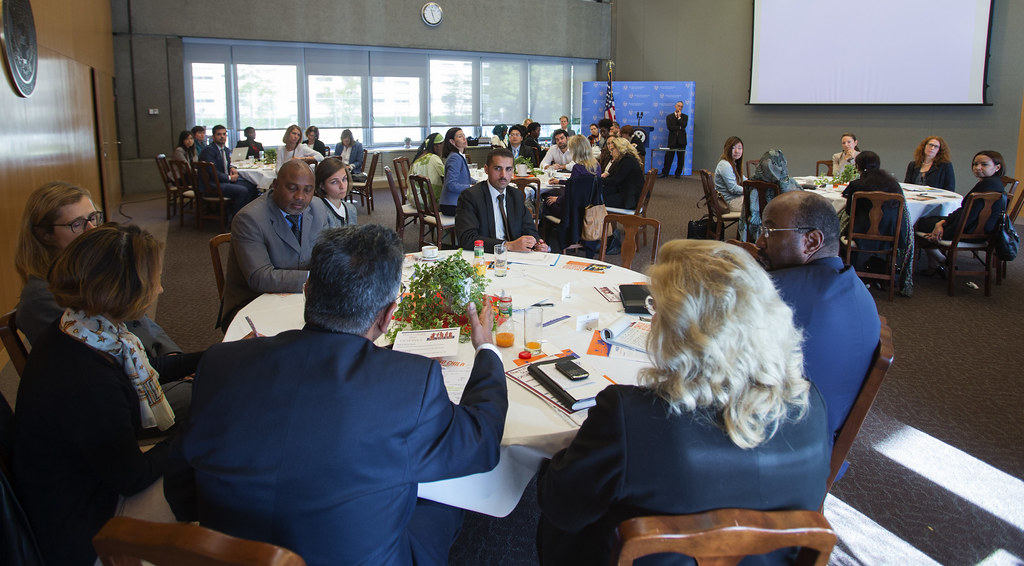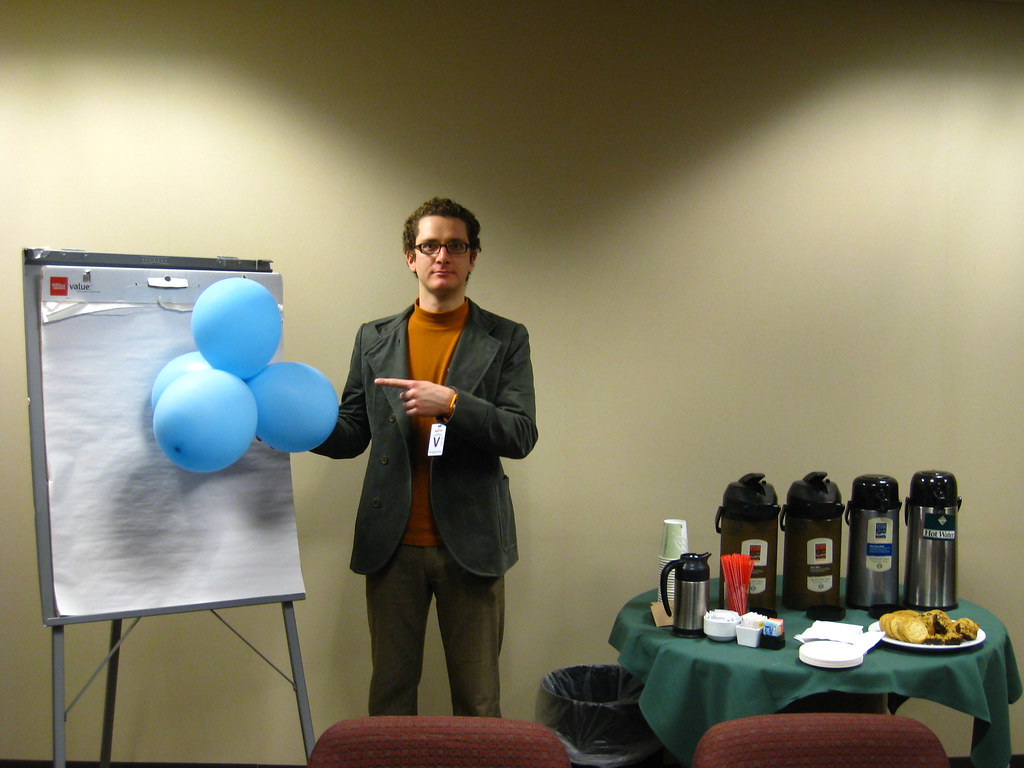
Job burnout, once perhaps a less discussed phenomenon, has emerged as a pervasive and troubling challenge in today’s professional landscape, increasingly recognized for its profound impact on individuals and organizations alike. It’s more than just feeling tired; it’s a specific type of stress linked to work, characterized by physical and emotional exhaustion, accompanied by feelings of uselessness, powerlessness, and emptiness. While it isn’t a medical diagnosis in itself, it can significantly raise the risk of other health conditions, including depression, underscoring the critical need for understanding and intervention.
According to several surveys, job burnout is undeniably on the rise, leaving countless professionals emotionally drained, detached from their work and colleagues, and consequently, less productive. This escalating trend has serious repercussions, leading to increased health consequences for employees, a greater need for sick days, and ultimately, higher rates of job turnover. The recent global pandemic has only amplified this crisis, particularly among essential workers like healthcare professionals, bringing widespread concern to the forefront of organizational discussions.
However, a crucial shift in perspective is required to effectively address this issue. Journalist Jennifer Moss, author of “The Burnout Epidemic: The Rise of Chronic Stress and How We Can Fix It,” powerfully argues that the onus for burnout often lies with organizational structures and cultures, not solely with the individual’s lack of resilience. Suggesting that personal wellness tools like yoga or meditation are the sole cure is, she asserts, “dangerous” if the underlying systemic issues remain unaddressed. Instead, real solutions demand a deep dive into the core causes of burnout, prompting organizations to re-evaluate their policies and foster environments where employees can truly thrive, feel valued, and enjoy their work as it was meant to be.

1. **Unsustainable Workloads**One of the most frequently cited and impactful reasons for job burnout is the burden of an unsustainable workload. When employees consistently face heavy workloads, unrealistic deadlines, or feel overwhelmed by demands they cannot keep up with, their energy reserves are quickly depleted. This constant pressure to do “too much” can lead to chronic stress, fatigue, and a profound sense of exhaustion, affecting both physical and mental well-being.
Jennifer Moss emphasizes that overwork is a primary contributor to burnout, with severe health implications ranging from weight loss and body pain to high cortisol levels and sleep loss. The common advice to simply “just say no” often backfires because employees fear being perceived as uncommitted or facing negative consequences. Instead, organizations must proactively manage workloads by helping employees identify low-priority goals, matching job duties to individual strengths, and providing adequate support when unexpected needs arise. Establishing open and safe communication channels where feedback is encouraged also allows employees to voice concerns about their capacity.
Furthermore, practical policy changes can make a significant difference. Moss suggests exploring options like implementing a four-day workweek, encouraging frequent walking breaks throughout the day, and even eliminating the expectation of “work lunches” to create clearer boundaries and allow for genuine recovery. The Forbes Coaches Council echoes this by highlighting that recovery breaks, though seemingly counterintuitive, help reset energy, enabling employees to tackle tasks more efficiently with a fresh perspective. Additionally, the “only I can do this” mindset, where professionals struggle to delegate, also contributes to untenable workloads that accelerate burnout, underscoring the need for companies to assist in mastering delegation skills.
Beyond just the volume of tasks, burnout can also stem from “invisible work” – the endless, unrecognized tasks like putting out fires or handling administrative duties that quietly wear people down. These unacknowledged efforts add to the perceived workload without recognition, further exacerbating feelings of overwhelm. Regular work audits, where teams can identify and fairly redistribute these hidden burdens, can restore balance and prevent task duplication, significantly boosting morale and overall momentum.
Read more about: Beyond the Paycheck: 13 Toxic Corporate Cultures That Fuel Mass Employee Walkouts

2. **Lack of Control & Autonomy**A fundamental psychological need in the workplace is the feeling of control and autonomy over one’s work. When employees perceive a lack of control over key aspects of their job, such as their schedule, assignments, or overall workload, it becomes a potent driver of burnout. Not having the necessary resources or tools to perform their work effectively further compounds this sense of powerlessness, leading to deep dissatisfaction and stress.
Studies consistently show that autonomy at work is crucial for well-being. Jennifer Moss points out that being micromanaged is particularly de-motivating, eroding an employee’s sense of agency and trust. When leaders constantly monitor every move, dictate work schedules rigidly, or excessively punish missteps, employees feel stifled and disempowered. This lack of self-determination prevents them from investing fully in their roles and contributes to feelings of frustration and disengagement.
To counter this, organizations should empower employees by fostering a sense of autonomy. Leaders can shift from a controlling stance to one of coaching, providing guidance rather than strict directives. This involves inviting employees to ask questions, express their needs, and allowing them greater flexibility in setting their own schedules and goals. Encouraging individuals to find personal meaning in their jobs also helps restore a sense of purpose and control, making them more invested and less prone to burnout.
According to the Forbes Coaches Council, stress and burnout flourish in environments where control is lacking due to unclear expectations, poor communication, and overall dysfunction. To mitigate this, companies should focus on creating role clarity through facilitated discussions that align expectations. Regular check-ins to adjust workloads, investments in workflow efficiencies, and leaders modeling healthy boundaries, promoting structured breaks, and honoring self-agency are all vital steps. This proactive approach helps to rebuild trust and combat the detrimental effects of micromanagement.
Read more about: The Essential 12: Ironclad Contract Clauses Every Influencer and Brand Needs to Know

3. **Poor Relationships & Conflicts**The human need for connection and belonging extends powerfully into the workplace. When relationships with colleagues and supervisors are strained, or when active conflicts exist, the work environment becomes a source of significant stress and can accelerate burnout. Feeling isolated, targeted, or perpetually at odds with others at work can be as debilitating as an excessive workload.
The Mayo Clinic staff points out that conflicts with others, such as working with an office bully, feeling co-workers are against you, or having a boss who is overly involved, all contribute significantly to job stress. These interpersonal frictions create a toxic atmosphere where energy is diverted from productive work to managing emotional strain and navigating difficult social dynamics. Such environments drain emotional reserves and make it challenging to maintain focus and enthusiasm for one’s responsibilities.
Jennifer Moss underscores the importance of a sense of belonging for mental health and well-being, both in personal life and at work. She references a Gallup poll finding that employees with strong social connections, like having “best friends at work,” report significantly higher levels of healthy stress management, even when experiencing similar levels of stress. This highlights the protective power of positive relationships in buffering against burnout, and conversely, the damaging effect of poor relationships.
To cultivate a healthier workplace, Moss advocates for employers to actively address social needs. This includes creating spaces where colleagues can connect around non-work-related topics, fostering a sense of community. Encouraging volunteerism and building more inclusive cultures that prioritize cooperation over competition are also crucial strategies. When individuals feel part of a supportive community, they are more likely to thrive. Conversely, a toxic company culture, often driven from the top, can lead to widespread burnout, tension, and high turnover, making it imperative for leadership to foster positivity, ambition, and collaboration.
Read more about: The End, And Just Like That: Unpacking the Divisive Legacy and Cast Reflections on the ‘Sex and the City’ Revival

4. **Lack of Reward or Recognition**When employees consistently put in effort but feel their contributions are neither adequately rewarded nor genuinely recognized, it can swiftly lead to burnout. The psychological contract of work involves a mutual exchange: effort for compensation, but also for validation and a sense of value. When this latter component is missing or feels disingenuous, motivation wanes, and a sense of emptiness can set in.
Jennifer Moss states unequivocally that paying someone what they are worth is a fundamental form of reward. Beyond monetary compensation, however, it is equally vital to communicate to people that their efforts genuinely matter. She writes, “When we don’t acknowledge each other, both as peers and leaders, we lose our sense of value to the greater organizational mission and we stop feeling good about ourselves.” This loss of value can be deeply demotivating, making daily tasks feel like thankless chores.
It is crucial that rewards and recognition are authentic and not perceived as manipulative or forced. Moss cautions against recognition programs that inadvertently pit employees against one another or elevate only certain team members, as these can foster jealousy, anger, or a sense of being overlooked. True appreciation should come from top leadership and also be encouraged peer-to-peer, extending beyond just meeting work goals to include recognition for showing empathy and care for colleagues. This holistic approach builds a culture of gratitude and mutual respect.
Furthermore, the concept of “invisible work” often goes unrecognized, silently wearing employees down. These are the unsung tasks, the problem-solving, and the administrative burdens that aren’t explicitly part of a job description but are essential for operations. When these efforts go unnoticed, it contributes to feelings of being undervalued and unheard. Regularly auditing work processes to identify and acknowledge these hidden burdens can help to fairly distribute tasks and ensure that all contributions are seen and appreciated, thereby reducing burnout and boosting morale.
Read more about: Undervalued ’80s Imports: 9 Easy-to-Maintain Restoration Gems You Need to Know About

5. **Lack of Support**Feeling unsupported in the workplace, whether by management, colleagues, or the organization as a whole, is a significant precursor to burnout. When individuals feel isolated, without the necessary resources, guidance, or emotional backing to navigate their professional challenges, the stress of their job becomes amplified and increasingly difficult to manage. This sense of being alone in facing demands can be profoundly overwhelming.
The Mayo Clinic staff highlights that a lack of support, both at work and in personal life, can intensify stress levels. Seeking support from co-workers, friends, or loved ones is identified as a crucial coping mechanism, as talking to others can help process stress and reinforce a sense of belonging, which is protective against burnout. If an employer offers an employee assistance program, utilizing such services can also provide a vital avenue for support.
Jennifer Moss implicitly reinforces the need for support by advocating for organizational leaders to “provide more support when needs change suddenly,” indicating that dynamic and responsive support systems are essential. When unexpected challenges arise, having a clear channel for assistance and reassurance can prevent a manageable issue from spiraling into a burnout trigger. This proactive approach to support demonstrates that the organization values its employees’ well-being and is invested in their success.
The Forbes Coaches Council directly states that burnout can happen “really quickly when employees feel unsupported.” They emphasize that when leaders actively advocate for their team members’ needs – whether it involves balancing workloads, securing adequate resources, or approving necessary time off – employees feel less stressed and more motivated. This kind of advocacy signals a caring environment where individuals are not left to struggle in isolation, reinforcing that a supportive leadership presence is indispensable in preventing and mitigating burnout.
Navigating the complexities of the modern workplace requires a deep understanding of the systemic issues that contribute to burnout. While the first half of our exploration highlighted fundamental concerns like workload and recognition, the journey doesn’t end there. True resilience, both personal and organizational, demands we confront additional, often subtle, yet profoundly impactful factors that chip away at our well-being and productivity. These remaining six crucial elements delve into the broader ecosystem of work, from personal boundaries to leadership’s profound influence, offering a more complete picture of why so many professionals find themselves on the precipice of exhaustion.
Read more about: Unlock the Best Price on a Full Synthetic Oil Change: Your Ultimate Lifehacker’s Guide

6. **Problems with Work-Life Balance**A significant and increasingly prevalent cause of job burnout stems from an imbalanced work-life dynamic. When professional responsibilities encroach upon personal time and energy, leaving little for family, friends, or self-care, the foundation of an individual’s well-being begins to erode. The Mayo Clinic staff clearly links this lack of balance to job burnout, emphasizing that an inability to delineate professional from personal life consumes vital time and energy, ultimately leading to exhaustion and a profound sense of depletion.
Jennifer Moss, a leading voice on burnout, further explains how well-intentioned company perks, such as on-site gyms or free meals, can inadvertently worsen this issue. By making the workplace too comfortable and convenient, organizations risk encouraging employees to stay longer, blurring the lines between work and home. This can lead to people missing out on crucial recovery time and the invaluable benefits of connecting with loved ones, ironically deepening the very imbalance these perks aimed to mitigate.
Moreover, the perception of available time off can be misleading. While many companies offer seemingly generous benefits like “unlimited vacation,” the reality often falls short. Moss points out that such policies are meaningless if employees feel pressured not to take time off, or worse, return to an insurmountable backlog of work after a brief respite. This psychological burden negates the restorative power of vacation, transforming a supposed benefit into another source of stress and guilt, as highlighted by members of the Forbes Coaches Council who speak of the profound impact of guilt over taking time off.
Effectively addressing work-life imbalance demands a cultural shift that genuinely values self-care and recovery. Companies must actively encourage employees to take mental health days when needed and create an environment where disconnecting from technology outside of office hours is not just accepted, but expected. Prioritizing consistent, restorative sleep and setting clear boundaries between work and personal life are crucial, not just as individual coping mechanisms, but as integral components of an organizational culture committed to preventing burnout and fostering overall employee health and engagement.
Read more about: Melissa McCarthy’s Epic Transformation: Unpacking Her Weight Loss Journey, Fan Reactions, and The Big 2025 Reveal

7. **Values Mismatch**A more profound, yet often overlooked, cause of burnout stems from a fundamental misalignment between an individual’s personal values and goals and those of their organization’s culture. Jennifer Moss articulates this eloquently, stating that “Hiring someone whose values and goals do not align with the values and goals of the organization’s culture may result in lower job satisfaction and negatively impact mental health.” When an employee doesn’t resonate with the company’s mission or ethical framework, their work can feel hollow, leading to unhappiness and a decline in productivity, regardless of other positive factors.
This mismatch can manifest in various ways, from being asked to compromise personal ethics to working for a cause or product that feels inconsequential or even detrimental. Over time, this constant internal conflict drains an individual’s motivation and energy, transforming their role into a source of psychological distress rather than fulfillment. The intrinsic human need to find meaning and purpose in one’s work is thwarted when core values are at odds with organizational practices.
To prevent values mismatches, Moss suggests a proactive approach during the hiring process, ensuring a thoughtful evaluation of cultural fit alongside skills and experience. However, the responsibility doesn’t end there; organizations must consistently live up to their stated values. If a company fails to stand up for its own mission or shifts its ethical stance, employees can become deeply disillusioned, leading to withdrawal and accelerated burnout. By communicating values clearly and striving to fulfill their mission authentically, organizations foster an environment where employees can genuinely align and thrive, finding deeper satisfaction and resilience in their roles.
Read more about: Mastering Your Ride: A Comprehensive Guide to Selecting the Perfect Wheel and Tire Combination for Optimal Performance and Safety

8. **Ineffective Leadership**The quality of leadership within an organization profoundly shapes the employee experience and stands as a pivotal factor in preventing or exacerbating burnout. As Alex Draper of DX Learning Solutions, a member of the Forbes Coaches Council, asserts, “A major factor leading to stress or burnout at work is poor leadership.” He emphasizes that the relationship with a direct manager influences an employee’s mental health even more significantly than external advice or exercise, highlighting the manager’s critical role as a frontline determinant of psychological well-being.
Ineffective leadership can manifest in various ways, from a lack of clear vision and inconsistent decision-making to an inability to foster a supportive and psychologically safe environment. Such leadership failures create uncertainty and anxiety, forcing employees to navigate ambiguity and insecurity that drain their emotional and cognitive resources. This type of stress is particularly insidious because it often feels beyond an individual’s control, leading to feelings of powerlessness that are hallmarks of burnout.
To counter this, investing in leadership training becomes paramount. Draper suggests focusing on skills such as creating psychological safety, where employees feel safe to speak up without fear of retribution, and practicing empathy. When leaders are equipped with these competencies, they can significantly reduce employee stress, foster a positive culture, and improve overall workplace well-being. Erica McCurdy of McCurdy Solutions Group further emphasizes that company culture, which is largely driven from the top, can be transformed through coaching for leaders, guiding them to cultivate positivity, ambition, and collaboration, thereby preventing burnout and reducing turnover.
Read more about: Remembering a Legend: Burt Reynolds and His 12 Most Iconic Roles That Defined an Era

9. **Inherent Job Demands and Personality Fit**Some professions, by their very nature, carry a higher intrinsic risk of burnout, while certain personality traits can also predispose individuals to it. The Mayo Clinic staff notes that professions requiring a lot of “giving to others,” such as healthcare, can be particularly demanding, placing immense emotional and physical tolls on workers. Additionally, personality traits, such as higher levels of neuroticism, conscientiousness leading to perfectionism, or introversion in highly social roles, can affect an individual’s susceptibility to burnout, as pointed out by Jennifer Moss.
Moss explains that healthcare workers and teachers, for instance, face higher rates of burnout due to the inherent demands of their work and the personality types often drawn to these service-oriented roles. The constant emotional labor, exposure to suffering, and the relentless pressure to deliver, especially amplified during crises like a pandemic, create an environment where emotional reserves are quickly depleted. This goes beyond specific tasks; it’s about the fundamental nature of the job itself.
Furthermore, a fundamental “misalignment with roles,” as described by Hulan Hagen of the Business Intuition Institute, can contribute significantly. When an employee’s intuitive understanding of their purpose or their core needs (as suggested by Gia Tskhovrebadze of GT Coaching International regarding Enneagram personality types) does not correspond with job obligations, it can lead to prolonged stress and a loss of focus. This is not merely about unclear expectations but a deeper, existential disconnect with the inherent characteristics of the role.
For organizations, addressing these inherent demands involves recognizing the unique pressures of certain roles and providing targeted support. This might mean implementing specific resilience training, ensuring robust psychological support, or even examining the fundamental structure of highly demanding jobs to build in more protective measures. For individuals, understanding one’s own personality traits and career inclinations, and seeking roles that genuinely align with them, can be a proactive step in preventing burnout, ensuring that the work itself is a source of purpose and not perpetual depletion.
**A Path Forward: Reclaiming Purpose and Well-being**
Our journey through the 12 most common reasons people burn out at work paints a vivid picture: burnout is not merely an individual failing but a complex tapestry woven from organizational practices, leadership quality, and personal fit. From unsustainable workloads and a lack of control to misaligned values and poor leadership, each factor chips away at an employee’s spirit and health. The solutions, therefore, demand a comprehensive, empathetic approach that looks beyond quick fixes and superficial perks. It requires a commitment to creating workplaces that prioritize psychological safety, foster genuine recognition, cultivate supportive relationships, and empower individuals to thrive.
Read more about: What’s New with the 2025 Toyota Camry? An In-Depth Car and Driver Analysis of Its Hybrid-Only Shift and Key Upgrades
As we conclude this in-depth exploration, it’s clear that addressing burnout is not just about mitigating suffering; it’s about reclaiming the intrinsic value and joy of work. When organizations commit to fairness, champion work-life balance, leverage individual strengths, and provide robust support, they don’t just prevent burnout—they cultivate environments where innovation flourishes, loyalty deepens, and human potential is fully realized. This isn’t just good for employees; it’s fundamental to building resilient, productive, and truly human-centered enterprises in the modern era.



